This curlew gave me a lesson on what “opportunistic foraging” really means.
Occasionally I rerun a favorite older post. This one was originally published in April of 2016. For this version I’ve omitted part of the original post that had little to do with the subject at hand, edited the text and tweaked the formatting.
Long-billed Curlews are often described as “opportunistic feeders” but until this April morning on Antelope Island I had no idea how opportunistic they can be.
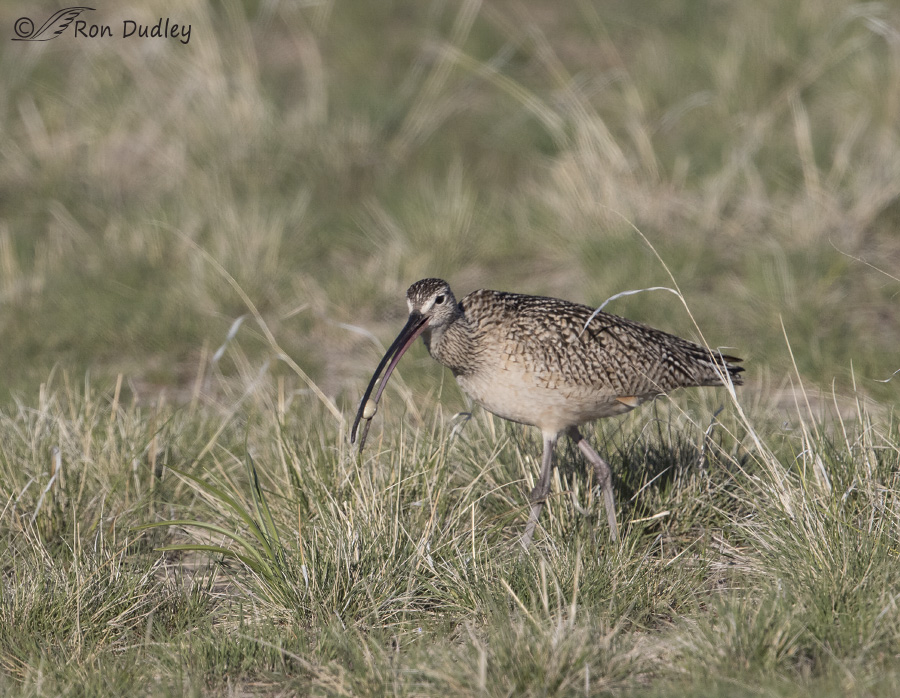
1/3200, f/6.3, ISO 500, Canon 7D Mark II, Canon EF 500mm f/4L IS II USM + 1.4 tc, not baited, set up or called in
I was mostly just watching this female? curlew through my lens and not taking photos because she wasn’t very close and she usually had grass in front of her, when she suddenly picked something up from behind the clump of grass in front of her. Looking through my lens I couldn’t tell what she picked up but it turned out to be a small bird’s egg.
Almost certainly it was an egg from a Horned Lark’s nest that was hidden behind the grass clump.
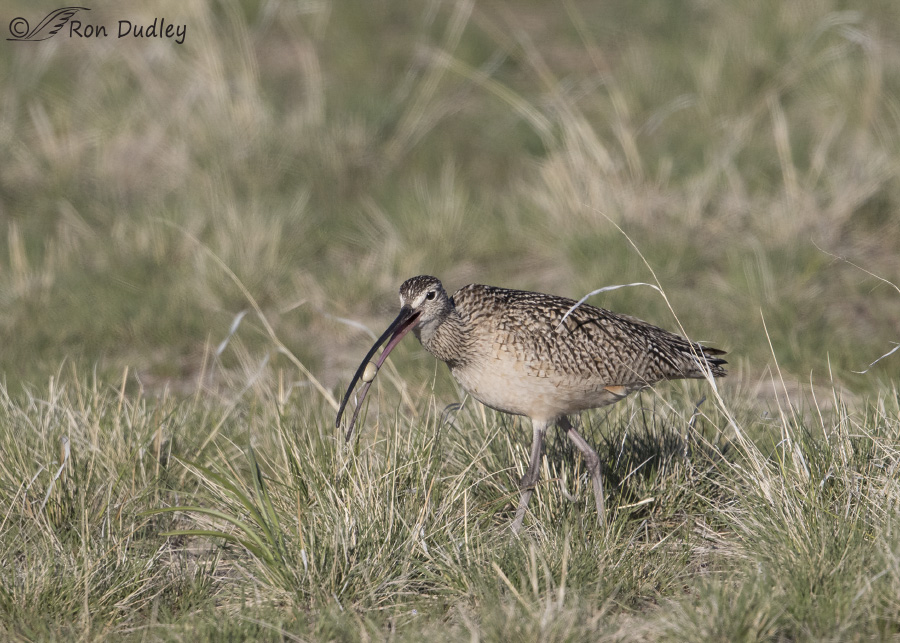
1/3200, f/6.3, ISO 500, Canon 7D Mark II, Canon EF 500mm f/4L IS II USM + 1.4 tc, not baited, set up or called in
She quickly began to move the egg up her very long bill in preparation for swallowing.
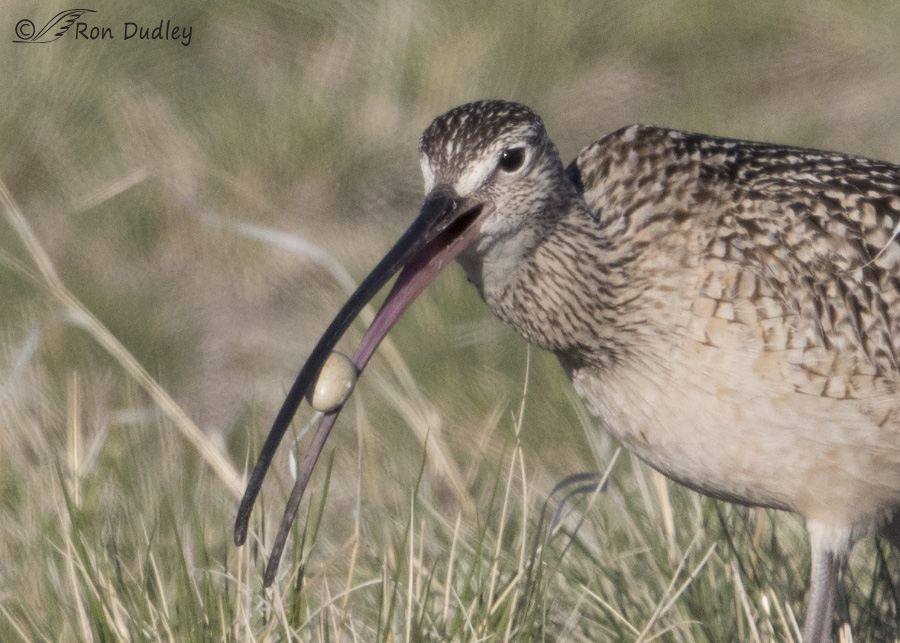
1/3200, f/6.3, ISO 500, Canon 7D Mark II, Canon EF 500mm f/4L IS II USM + 1.4 tc, not baited, set up or called in
A very large crop of the previous image confirms that it really was a small, lightly speckled egg.
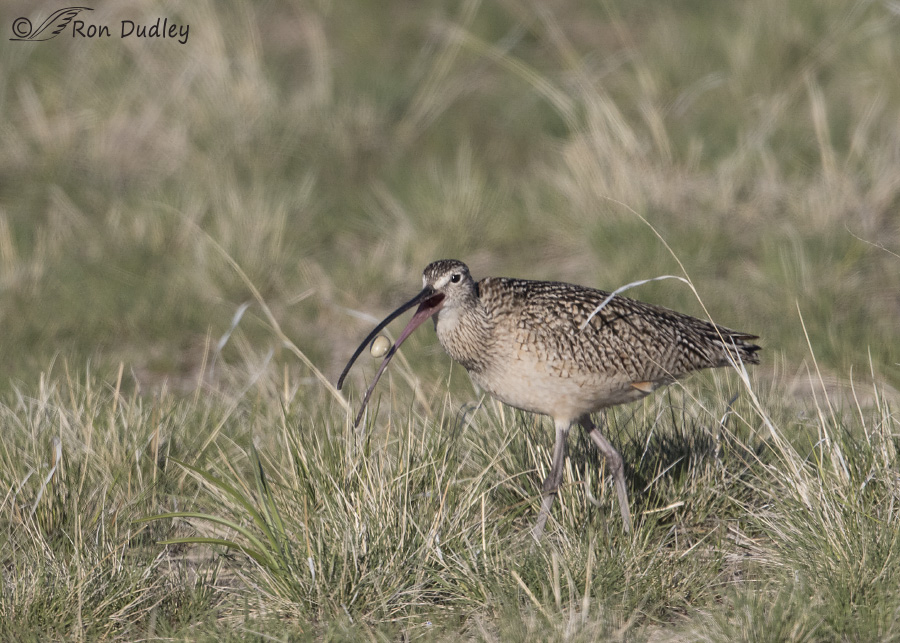
1/3200, f/6.3, ISO 500, Canon 7D Mark II, Canon EF 500mm f/4L IS II USM + 1.4 tc, not baited, set up or called in
In one photo, not quite as sharp as the others, I caught the egg in midair (the egg isn’t touching her bill).
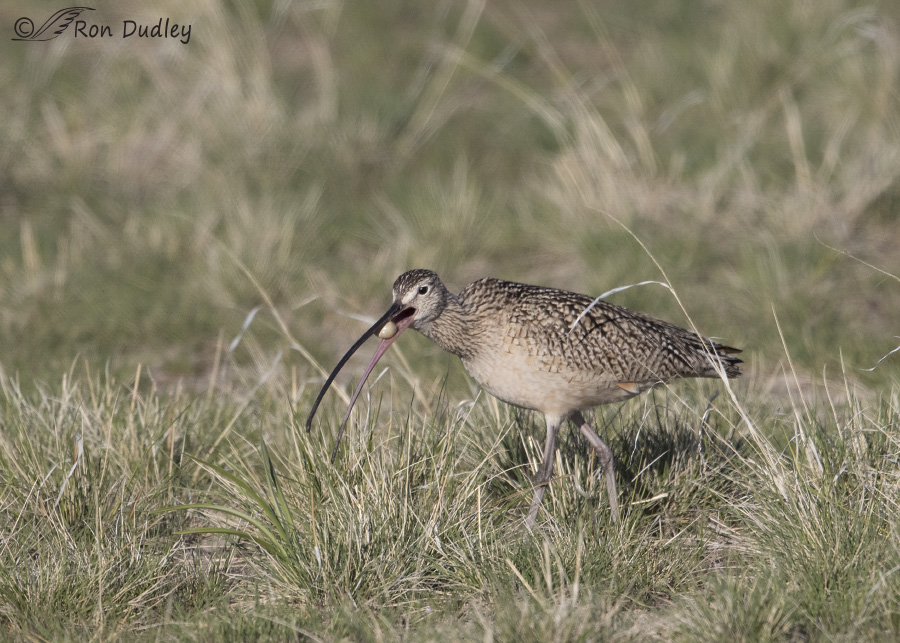
1/3200, f/6.3, ISO 500, Canon 7D Mark II, Canon EF 500mm f/4L IS II USM + 1.4 tc, not baited, set up or called in
She had to move the egg a good distance up that long bill but it’s almost there.
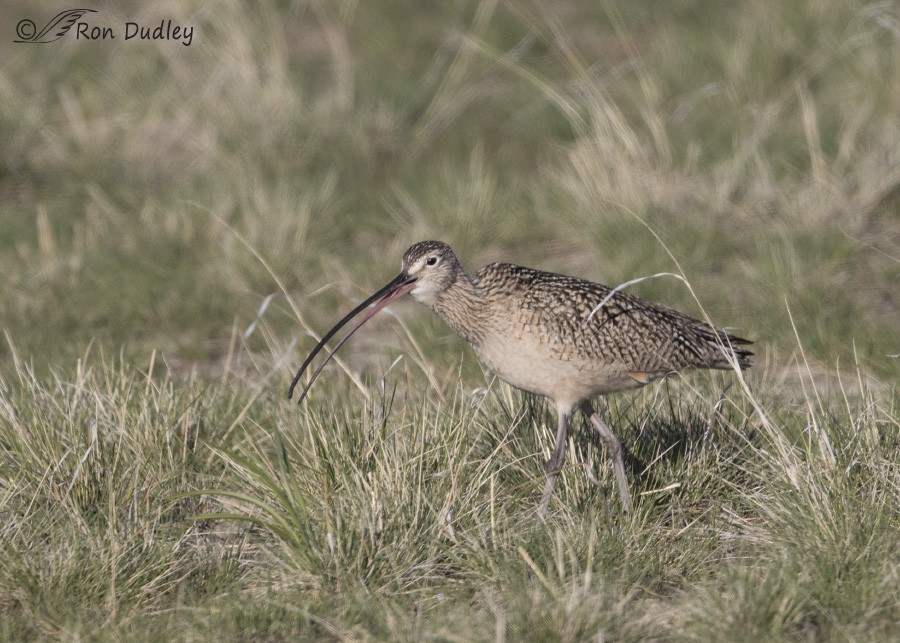
1/3200, f/6.3, ISO 500, Canon 7D Mark II, Canon EF 500mm f/4L IS II USM + 1.4 tc, not baited, set up or called in
Down the hatch (bad pun intended). Based on the burst rate of my camera and how many photos I took, it only took her about half a second to move it up her bill and swallow it.
This behavior surprised me for two reasons:
- I’d never before seen curlews raiding bird nests and to be honest, I’d never even considered the possibility.
- She swallowed the egg whole instead of breaking it open and eating its contents. In my ignorance I guess I just assumed that if a curlew did eat an egg, it wouldn’t swallow it whole.
I little research suggests that I shouldn’t have been surprised that curlews eat the eggs of other birds. I found the following about Long-billed Curlews on Birds of North America Online (now known as Birds of the World).
- “On breeding grounds, appears to be opportunistic forager, supplementing a diet of invertebrates such as grasshoppers and beetles (Coleoptera) with small vertebrates like bird eggs and nestlings”.
- “Found nests of ground-nesting Horned Lark by walking immediately to spot where bird flushed, ignoring distraction displays and repeated strikes on the back and neck by the adult Horned Lark. Harassed by McCown’s Longspur and Horned Lark, suggesting depredation of these species’ nests may be common”.
I’d never thought of curlews as being nest-raiders and the thought of them eating nestlings of other bird species just wasn’t on my radar. I don’t have any problem with it though. It is what it is.
Ron


Wow! I am stunned, I would never have thought a Curlew was a nest robber.
Thanks once again for teaching me something new.
Take Care,
Kaye
Thanks, Kaye. At the time it was new to me also.
Fascinating. And skilled. It doesn’t look at all as if that was her first time at that rodeo.
Thanks, EC.
Amazing, all the structures in that long bill, and how she manipulates the egg! I just watched a young Cooper’s Hawk demolish a rat – no knife/fork needed, just beak and talons. A morning to contemplate the food chain, for sure.
I wish I had your Cooper’s around here, Carolyn. There’s a rat that visits my back yard that needs its attention.
Food is food. I think birds eat many things that will surprise us.
I’m fairly often surprised by what they will and won’t eat.
Quite the talented curlew! Like Judy, I do feel bad for the raid-ee, even though I know that it’s all part of Nature and a curlew’s gotta eat. It just seems extra “in your face” that a female curlew is eating someone else’s egg.
Marty, I didn’t see the Horned Lark leave the nest. Maybe it was abandoned.
Ron, I would have been as surprised as you if I had come upon this experience. Had no idea they would raid nests and eat eggs whole. Once again thank you for another learning experience along with the always excellent photos.
Surprised the heck out of me. Thanks, Everett.
I’m curious as to HOW she moved that egg along that very long bill–
with her tongue ? I expected to see her throw her head back and use gravity, but apparently not that, either– how did she do it ?
Kris, she did it mostly by moving her head back and forth with her bill open enough at times that the egg wasn’t being held firmly (as in the photo that was cropped a lot). That allowed the egg to move up her bill.
What a wonderful series of photos. Seeing it in real life as fast as it occurred one would not be able to appreciate the deftness of her bill in moving the egg.
Thank you, Catherine.
WELL! That IS a surprise! One of those intellectually I “get it” things – emotionally it’s another story like the bullsnakes raiding nests. GEEZ! 😉 Definitely a bit of a challenge getting it from end of beak to down the hatch tho appears the Curlew didn’t think so…..
“appears the Curlew didn’t think so”
Not in the least, Judy. That egg was gone in not much more than an instant.